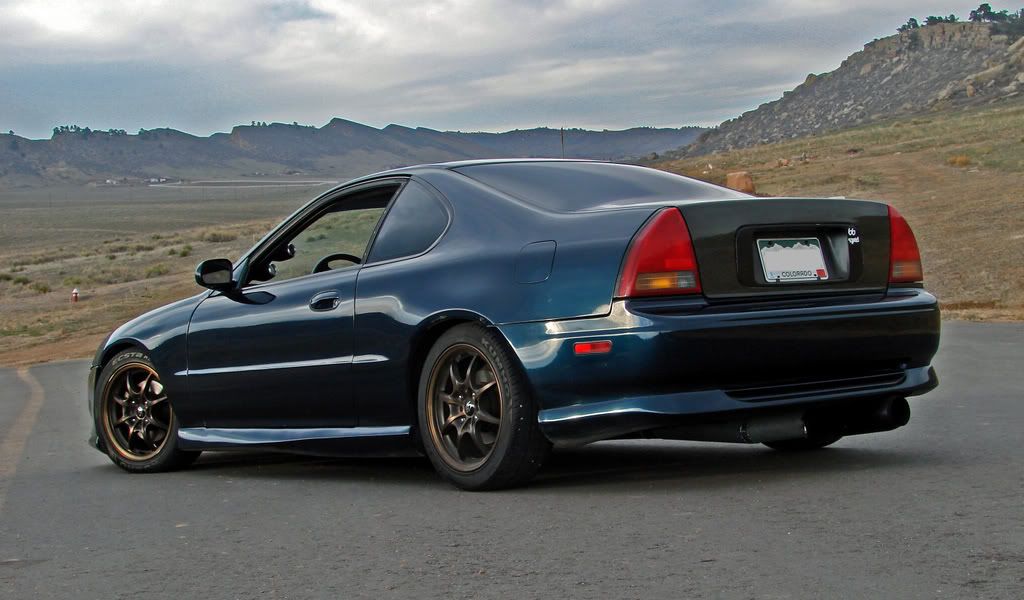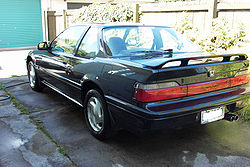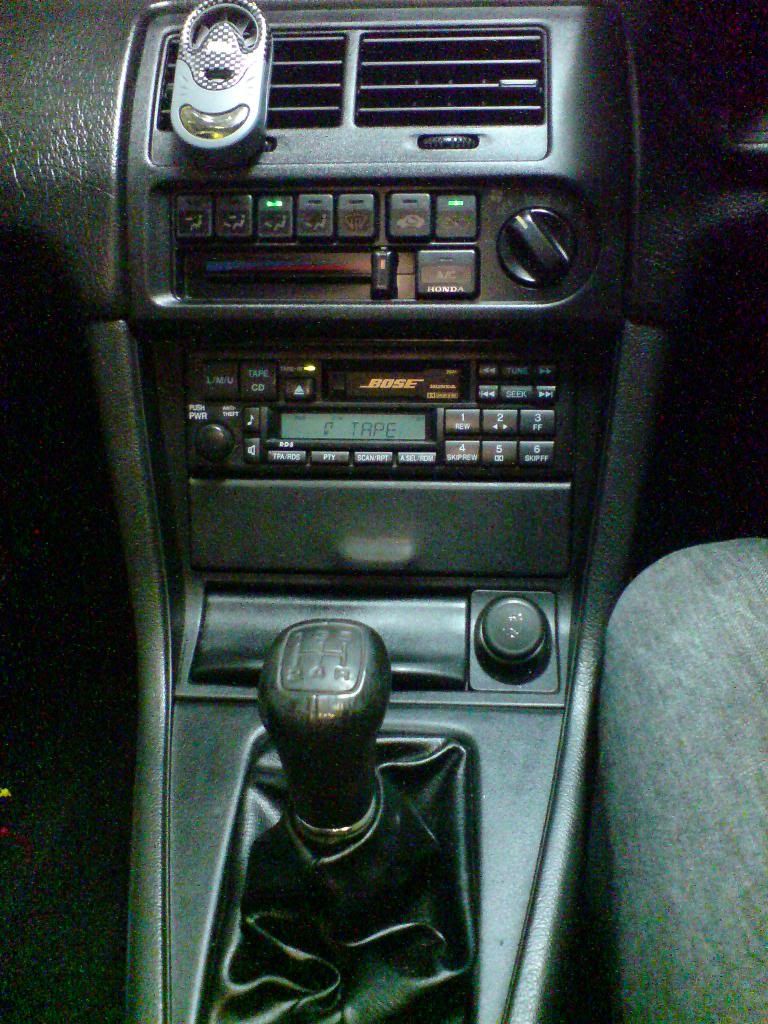On September 19, 1991, the fourth-generation Prelude was introduced
in Japan, and released worldwide for the 1992 model year. The car had a
58% front and 42% rear weight distribution. The four wheel steering
system was changed to an electronic version and the engine was increased
in capacity from 2.1 litres to 2.2 litres for the base model "S" (SOHC
F22A1 engine, 125 PS (92 kW; 123 hp) at 5200 rpm, 193 N·m (142 ft·lbf) at 4000 rpm) and "
VTEC" model (DOHC
VTEC H22A1, 190 PS (140 kW; 187 hp) at 6800 rpm, 207 N·m (153 ft·lbf) at 5500 rpm), with a 2.3-litre for the "Si" (DOHC
H23A1, 160 PS (118 kW; 158 hp) at 5800 rpm, 212 N·m (156 ft·lbf) at 5300 rpm). The Japanese Si came with the
F22B
(2.2 L DOHC non-VTEC, 160 PS (118 kW; 158 hp)). The VTEC model had an
upgraded brake system, going from a 10.3" (262 mm) front rotor to an
11.1" (282 mm) front rotor and utilizing larger brake caliper and pads,
similar to those found in the
Honda Vigor. Its styling approach is similar to the
Honda Ascot Innova during the same time period.
Additionally, a 2.0i, single overhead cam (SOHC) model was released
in Europe, rated at 133 PS (98 kW; 131 hp). 1993 was the last year that
the "Si-VTEC" (BB4) name was used, and beginning in 1994 it was
shortened to just "
VTEC"
and stayed that way throughout the rest of the generation. In some
countries, the Prelude with 2.2 VTEC engine was called the VTi-R. In
Canada, the Si was called the SR, and the VTEC was called the SR-V. Due to the width dimensions and the engine displacement exceeding
Japanese government regulations
for vehicles classified as "compact", this generation Prelude obligated
Japanese owners to yearly taxes, and the Prelude became known as a
luxury car in Japan as a result.
This model also marked the end for the pop-up headlights. The 1992
Prelude incorporated other design features that had also become the
"Prelude standard". The rear end was rounded and fairly high in
comparison to the previous square trunk line. The front fascia of the
car became wider with fixed headlights. The glass
moonroof made way for a steel sliding
sunroof which no longer retracted into the car but extended out and over it.
The light blue back lighting introduced in the third generation was
continued. Later models (1994 and on) also featured translucent
speedometer and tachometer needles. All VTEC & SE models received
leather interior. In Japan, there was also an in-dash
television set
available as an option. As a result of this, many enthusiasts have
modified the dashboards of their Preludes to fit a small television set.
Also featured was an 8-speaker audio system (Gathers DSP 8 Speaker
System) which included a center dash-mounted speaker and rear center
subwoofer, while the U.S. version received only 7 speakers (center dash
speaker not included). The Japanese version also included a digital
climate control system. The Canadian version received some options which
were not available in the United States. For instance, the Japanese
Prelude had power folding mirrors as well as a rear windscreen wiper,
while the Canadian market was the one to have heated mirrors and
optional heated seats. The Japanese model came with optional Honda
Access accessories such as Typus ski racks, under dash lights, headrest
covers, a cabin air filter, and floor mats. Some of the Japanese
domestic market fourth generation Prelude VTECs did not come with
options such as a sunroof and 4-wheel steering, as it was possible to
skip these options when buying in Japan. The fourth generation Prelude
also shares some suspension components with the fifth generation
(1994–97)
Honda Accord. It also shares many suspension components with the 5th generation Prelude's that are not equipped ATTS system.






















